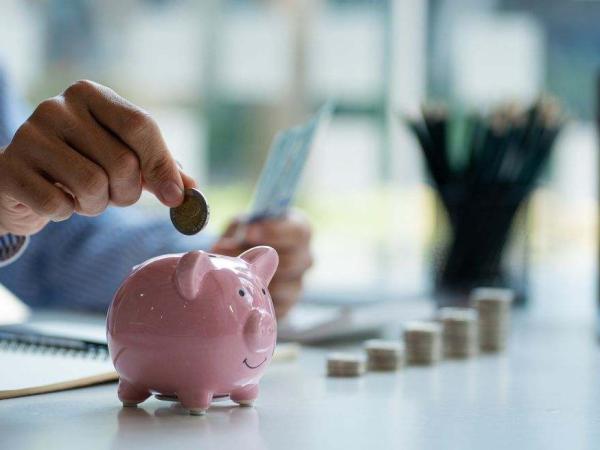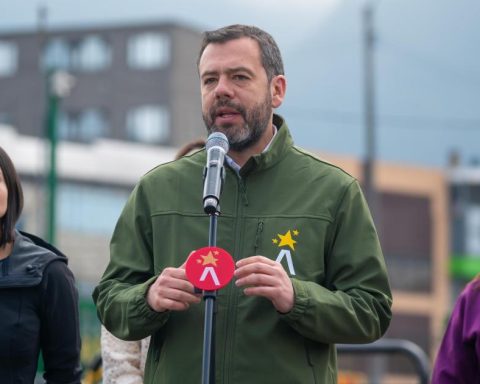Economic growth in Colombia is showing signs of recovery and this was evident in the GDP results for the second quarter, a period in which the surprising results of April and May helped turn around the bad streak, driven mainly by the State and public services, which finally dropped off in June, causing the pace to slow down again.
These data have been described by the study centers as a result of light and shadow, since on the one hand there was a positive balance again and on the other it was confirmed that important sectors such as industry and commerce have not been able to take off, This also creates a panorama of uneven growth, which could become unsustainable in the long term.
For reading: Will there be a 5×1,000 tax in the new tax reform project?
Turnaround in investment
Within the balance reported by Dane, one of the elements that drew the most attention was Gross Capital Formation, an indicator that represents the value of durable goods acquired by production units in order to be used for at least one year in the production process, and is a fundamental part of those who want to know how investment is behaving.
Colombian pesos
iStock
Having broken a streak of more than a year of constant falls and achieved a The annual variation of 1.7% was a fact that the Government celebrated, highlighting that this result was achieved thanks to the strengthening of confidence and the establishment of new capital in the local economy. However, analyses by Corficolombiana and Anif maintain that this is not enough if we want to return to pre-pandemic levels.
First of all, Corfi’s research team indicated that in addition to the small upturn already mentioned, it must be said that the investment rate remains at historically low levels of 14.7% of GDP, well below the 25% reached in the middle of the last decade. This is because investment in machinery and equipment continues to fall, which negatively affects sectors such as manufacturing.
Other news: Ministry of Finance on the 2025 Budget: ‘Misinterpretations must be corrected’
“Investment, measured by gross capital formation, stopped falling on an annual basis, largely due to the slight improvements shown by the construction sector, especially in infrastructure. However, the machinery and equipment component contracted 3.3% year on year, which is reflected on the sectoral side in the poor performance of the manufacturing industry, which remained in contractionary territory for the fifth consecutive quarter,” said these experts.
At the same time, they welcomed the fact that the economy continues to consolidate its recovery, accelerating its growth for the third consecutive quarter after having hit rock bottom in the final stretch of last year. However, they warn that, seen from another angle, it must be said that quarterly growth was only 0.1%, a very slow pace that shows the need for strong recovery measures.
Read here: Following Ecopetrol’s results, the oil company’s union calls for reactivating exploration
“Investment, measured through gross capital formationbroke its downward trend and, as in the construction sector, consolidated a turning point towards an upward trend since the end of last year. Investment recorded an annual growth of 1.5%, reversing the strong contractions of 11.3% in the first quarter of 2024 and 33.8% in the fourth quarter of 2023,” the report says.
On the other hand, they establish that “a similar analysis can be applied to gross fixed capital formation, which excludes inventories, which grew by 2.16% in the second quarter of 2024, after falls of 4.8% and 14.8% in the two previous quarters.”

Investment
iStock
Signs should not confuse
Another important view on this issue was that of the Anif Center for Economic Studies, which stated that the encouraging results should not divert attention from those areas that remain in the red and require urgent attention from the National Government, through a reactivation plan that cannot wait any longer.
These experts highlighted that “growth was “driven by the agricultural, public administration and artistic activities sectors. On the demand side, there was a marked recovery in gross fixed capital formation, explained by significant growth in other buildings and structures.”
“During the second quarter of 2024, domestic demand registered a significant recovery. With an annual growth of 1.6%, five consecutive quarters of negative annual growth were surpassed. This was due, on the one hand, to the 1.7% expansion of gross capital formation,” they warned.
Read also: Controversy over the costs of Prince Harry and his wife’s visit: how much money was spent
They also highlighted that in particular, gross fixed capital formation grew by 4.3%, driven mainly by the 15% growth in the component of other buildings and structures, thus breaking the chain of growth. negatives observed since the first quarter of 2023 (averaging falls of more than 20%).
“The sectors that contributed most to growth were the agricultural sector, with an increase of 10.2%, driven mainly by agricultural crops and a strong increase in coffee cultivation. Other notable sectors were public administration, which grew by 4.8%, and artistic activities, which increased by 11.1%. In contrast, the mining (-3.3%), information and communications (-1.9%) and industrial (-1.6%) sectors showed contractions,” they explained.

Foreign investment
iStock
Based on this, both Anif and Corfi conclude that the economy is recovering at a very slow pace, insufficient to meet the social needs of the country, mainly due to investment not related to construction, which has not yet taken off.
“Without strong economic recovery measures, the country’s potential growth could be reduced to 2.5%, from 3.2% before the pandemic. This scenario poses a considerable challenge to meet the country’s needs in terms of job creation and poverty reduction, which require a much faster pace of economic growth in the coming years,” Corficolombiana concluded.
Finally, they assured that another challenge for the economy has to do with the role of the public sector in recent growth and the sustainability of its contribution going forward, since the public administration sector has been key to ensuring that economic activity did not register negative variations and in the future it is not ruled out that this branch of activity will continue to slow down. in light of the adjustments made by the National Government to comply with the fiscal rule.

















